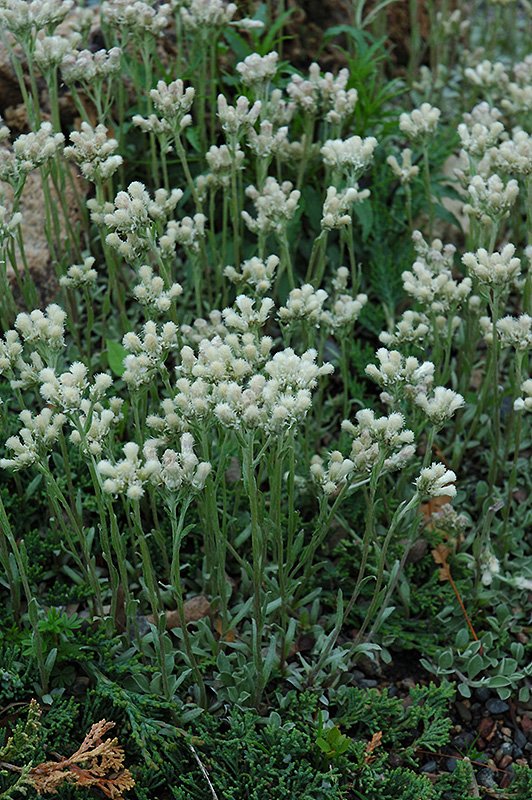>> Home
Height: 6 inches
Spread: 12 inches
Sunlight:
![]()
Hardiness Zone: 3a
Other Names: Pussy Toes, Pussy-Toes
Description:
A low growing selection perfect for groundcover, borders or garden beds; clusters of silvery-white flowers sit atop grey-green foliage; a drought tolerant variety that requires little to no maintenance
Ornamental Features
Pussytoes's attractive tiny tomentose narrow leaves remain grayish green in color with hints of silver throughout the year on a plant with an upright spreading habit of growth. It has balls of white flowers at the ends of the stems from late spring to early summer, which emerge from distinctive silver flower buds, and which are interesting on close inspection.
Landscape Attributes
Pussytoes is an herbaceous evergreen perennial with an upright spreading habit of growth. It brings an extremely fine and delicate texture to the garden composition and should be used to full effect.
This is a relatively low maintenance plant, and should not require much pruning, except when necessary, such as to remove dieback. Deer don't particularly care for this plant and will usually leave it alone in favor of tastier treats. It has no significant negative characteristics.
Pussytoes is recommended for the following landscape applications;
- Mass Planting
- Rock/Alpine Gardens
- Border Edging
- General Garden Use
- Groundcover
- Naturalizing And Woodland Gardens
Planting & Growing
Pussytoes will grow to be only 6 inches tall at maturity, with a spread of 12 inches. Its foliage tends to remain low and dense right to the ground. It grows at a medium rate, and under ideal conditions can be expected to live for approximately 5 years. As an evegreen perennial, this plant will typically keep its form and foliage year-round.
This plant should only be grown in full sunlight. It prefers dry to average moisture levels with very well-drained soil, and will often die in standing water. It is considered to be drought-tolerant, and thus makes an ideal choice for a low-water garden or xeriscape application. It is not particular as to soil pH, but grows best in poor soils. It is highly tolerant of urban pollution and will even thrive in inner city environments. This species is native to parts of North America. It can be propagated by division.
